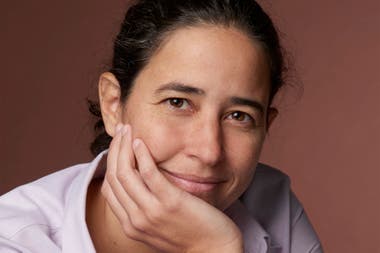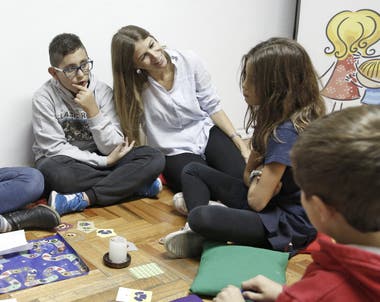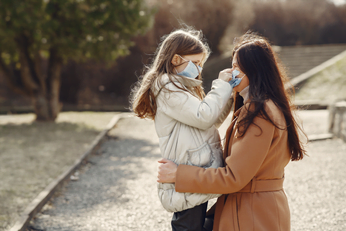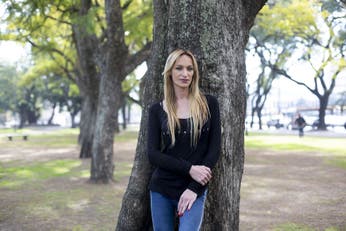
When Alexia Rattazzi, child and adolescent psychiatrist and co-founder of the Argentine Program for Children, Adolescents and Adults with Autism Spectrum Conditions (Panaacea), thinks about a society that truly embraces all diversities, considers that the word “inclusion” falls short. “It implies that there is still the other side of the coin, which is exclusion,” says the specialist, who in recent years has become one of the visible faces of the struggle for compliance with an elementary right, but still violated for millions of boys and girls in the country: access to a inclusive and quality education.
On National Special Education Day -a concept that he believes should be updated in light of the new paradigm-, he assures that the key word is “coexistence”, since “including implies that this attitude depends on another person”, whereas in coexistence “nobody has to do anything in particular, just living with the rest. ” Putting the focus on myths that persist and they go against that path, he maintains that, like all cultural change, it will take time and will imply leaving the comfort zone and being truly convinced that “all students have the capacity to learn.”
-How much progress have we made towards a truly inclusive society of all diversities?
-I think that the new generations have a much more respectful and open look in relation to diversity, whatever its type. When you go to older generations and to some provinces where there are conservative beliefs, there you have a not so open and not so respectful look. The biggest challenge is changing those looks. The path, the objective, is to be able to look at diversity as something that enriches human beings and I believe that little by little we are going there.
Everything you need to know about inclusive education
-Beyond the fact that inclusive education is a fundamental right, what are the contributions it makes not only to the educational community, but to society in general?
-If you want an inclusive society, your strongest bet, and one that will probably have the most results, is to an inclusive education. That is proven. Because if you start with entry-level boys and girls who are already learning and living in diversity, obtaining training in values where respect is fundamental, that long-term generation will be one that probably does not discriminate and lives in diversity. It is something that will be seen when those children are the future adults of society, but it will undoubtedly be an inclusive one. However, the word inclusion still falls short.
-In what sense?
-When you speak of inclusion, there is still the double side of the coin that is exclusion. What one identifies in the word “inclusion” is that it depends at some point on the attitude or decision of someone who, in a given context, decides and acts in relation to the inclusion of another person. And that is a problem, a barrier, because if that someone does not take an attitude in favor, that other is left without inclusion. That is why we always try to talk about “coexistence”: no one is required to do anything outside of what they have to do, simply to live with those around them without depending on anyone to include or not.
-And those values are transmitted from the first years.
-Exact. If you train and educate from a very early age in those values of respect for diversity, learn to look at the strengths of others, kindness, solidarity, empathy, cultivate patience, among others, you will really have a more respectful society of the diversity. Also, when one has an inclusive education it brings wealth to all students equally: learning in a diverse environment is richer for all. You are training better people and that seems to me to be very important. On the other hand, there are studies that also show that from the point of view of State investment, less money is needed to guarantee an inclusive and quality education than a segregated one, because all places are accessible to all and all Figures linked to teaching are prepared to teach everyone.
-There are many myths related to inclusive education that still persist today. For example, that a girl or boy with a disability may “lag behind” the rest of her classmates in their learning. What others do you think is key to banish?
-That is one of the most frequent: that it will slow down the group, because everyone will have to slow down. Also, if someone has a challenging or infrequent behavior, in many parents there is the fear of the risk of copying or imitation: “I don’t want my son or daughter to copy what the other does.” “I don’t want him to do those weird things.” On the other hand, the fear that their children are exposed to some kind of harm from that boy who, because he has some kind of disability or condition, can hurt them. Even, even in certain sectors, there are people who think they can be infected.
-And what are the prejudices that are maintained in educational settings?
-Many think that in reality there is another type of education or teaching that will benefit those boys or girls with disabilities more and, therefore, it is better that they are in another place and not in an ordinary school. That myth is associated with putting boys into certain categories. For example, suppose that all deaf people learn in a certain way and, therefore, need certain practices. That generalization is also a myth. Because even if you are deaf, blind, have autism or an intellectual disability, there is diversity in the learning profiles. Regarding the implementation of inclusive education, many people see it as utopian, as an impossible, a dream, something impractical. And if you read something like utopia, in reality you are believing that it is not feasible and you are not going to do your best to achieve it. It generates the same effect on you as a myth: it is a belief that disables you.
-Despite the progress that has been made in recent years, finding an inclusive school continues to be an odyssey for many families. Why are a large number of institutions still resisting?
-Changing a paradigm is a process and takes time. People studying this say that changing this one in particular will take about 15 years. It is changing the belief system, which will allow you, in turn, to change practices and that has to be accompanied by policies. Those are the three dimensions of the inclusion index: inclusive policy, practice and culture. They are the ones that must be worked on in order to implement an inclusive and quality education. The policies are and are clear. There is no doubt from the Convention on the Rights of Persons with Disabilities, which is several years old and is law in Argentina, and also with some resolutions of the Federal Council of Education. Much work has to be done on the other two sides of the triangle: practices (linked to teacher training) and culture. If you do not change the beliefs that the educational community has, it will be difficult for you to change practices, because if one is not deeply convinced that really every student has the right to an inclusive quality education, you will not change the way you do things .
-What characteristics does an institution have that is truly inclusive?
-It is very difficult to talk about places. Those who can transform someone’s life are the people who are inside those spaces. What is needed are people who are truly convinced that inclusive and quality education is important, especially if they are in the running range of an establishment. There you have the most important asset. You also need self-reflection work indoors and from time to time in the community to see where you stand and identify opportunities for improvement.
Inclusive education: where to seek advice and report if it is not met
-There are schools or institutions of special education that maintain that, if all the commons were inclusive, this would lead to the disappearance of many jobs. What would happen to the special schools if all the boys were included?
-That is clearly another myth, a prejudice and a fear, because if someone is thinking that perhaps they are going to lose their job, the first thing they are going to say is: “I don’t want this to change.” They are beliefs that stop initiatives. There is a lot of resistance at times from the special schools community and it is understandable if they understand that this is like the call for their “disappearance”. But nobody is talking about the disappearance of the special schools but, if you like, a belief in relation to education.
-Today is Special Education Day. Should it be rethought in light of this new paradigm of inclusion?
-What should be done is retransform it, reconvert it into the Day of Inclusive Education. From the paradigm of inclusive education, the idea is that all schools are schools: it depends on the people who are inside the type of institution they are going to transform into. Special education teachers are very valuable professionals. Moreover, one wishes that ordinary school teachers had more tools like those of special education, because if you are going to work on inclusion you need professionals with many tools. The ideal would be an equitable distribution of human resources so that there is a diversity of teachers in every school. Schools should no longer have last names such as “common” or “special”, but rather all teachers, those who received special and common school training, should be working side by side. This in the present. Because in the future there should not be a difference in training: every teacher should be able to teach a diversity of students. Being able to teach in a diverse classroom requires changes in training, it is training teachers for an inclusive and quality education.
-Many people believe that not all children and adolescents with disabilities can be included in ordinary schools, since in some cases they are considered “too severe”. What would you answer them?
-When you talk about inclusive education, it is all students in the same schools. Then one can adapt the amount of time spent on certain shared activities. But it is not that there is a limit or a thermometer by which if the disability reaches certain degrees, that boy is left out. No. You will have to adapt the environment to be able to teach any type of student, because any type of student has the capacity to learn. That is a maxim of learning. It does not matter that he does not speak or that he has a profound intellectual disability. It is presumed that you have the ability to learn and in fact you do. It is to change the belief base: that is a total transformer, because it implies how the environment adapts, thinks and reflects on itself in providing the reasonable supports and adjustments that that particular person needs. That is the way we can ensure that all fully exercise their right to quality and inclusive education.
More information
- Panaacea
- Group Article 24
- Disability and rights
.
Publicado en el diario La Nación




